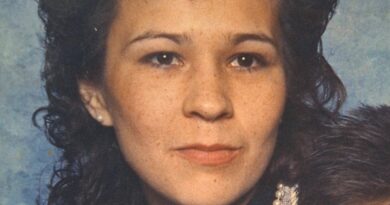The Murder of Denise Renee Chance in Springfield Ohio
Denise Renee Chance was eighteen, just stepping into adulthood in Springfield, Ohio. Friends remembered a bright smile, an easy laugh, and a grounded sense of responsibility that stood out among her peers. She had plans that felt both ordinary and important, the kind of plans that anchor a young person to the future. On January 07, 1985, that future was suddenly and violently taken away. Her disappearance and death left a wound that never healed for her family, and a mystery that continues to trouble investigators and the wider community.
The Young Woman Behind the Headlines
Before her name appeared in newspapers and on bulletin boards, Denise was a daughter, a sister, and a friend. Those who knew her speak first about kindness, then about reliability. She was not known to take reckless risks, and the people closest to her expected that she would always call if plans changed. This understanding of her character shapes the way the case is viewed, since it informs what counts as out of character, and what should be read as a sign that something had gone terribly wrong.
Springfield, Ohio in the Mid Eighties
In the mid eighties, Springfield was a city balancing industrial roots with the everyday rhythms of schools, neighborhoods, and small businesses. People recognized each other in grocery store aisles, and a shared sense of place carried between churches, diners, and high school games. That familiarity is part of why the case resonated so deeply. It did not feel like something that should happen in a city where neighbors waved and remembered birthdays. The setting matters because it frames both the shock and the urgency that followed the first day Denise did not return home.
The Morning Everything Changed
On January 07, 1985, the small details began to accumulate into alarm. Personal items that would have traveled with her remained inside the home. A purse, a coat, shoes, and keys told a story only by their absence from her person. A garage door left ajar and a home that felt unusually cold added to the sense that normal routines had been interrupted. The simplest explanation would have been a quick trip outside and a swift return, but the day stretched, and the return never came.
By the time concern became a formal missing person report, the situation had already crossed the line from worry to fear. The very facts that would normally reassure friends and family, the presence of belongings and the familiarity of her surroundings, instead deepened the anxiety. They suggested that whatever happened occurred quickly, close to home, and under circumstances that did not allow for a phone call or a note.
The First Phase of the Investigation
Detectives started where all sound investigations begin, with a careful reconstruction of the last hours before Denise vanished. They spoke with family, friends, and neighbors. They examined the residence and the immediate area for signs of disturbance, for footprints or tire tracks, and for any hint of a plan that would explain her sudden absence. In cases like this, investigators consider the possibility of a voluntary departure, then measure that theory against the person’s habits and relationships. In Denise’s case, the weight of the evidence argued strongly against a voluntary disappearance.
The earliest days matter in any search, since memories are freshest and physical traces have not yet been erased by weather and time. Calls went out to surrounding jurisdictions and to the public for information. In Springfield, the disappearance of a young woman on a winter day gathered attention quickly. The community responded with tips, some substantive, many hopeful but thin, and a few that were dead ends the moment they were recorded. Even so, each call had to be logged and checked, since the single detail that breaks a case can arrive from an unexpected voice.
A Grim Discovery in March
As winter moved toward spring, a discovery ended the uncertainty and began a new, more painful phase. On March 20, 1985, a body was found in a drainage area along a lane in Clark County. It was Denise. The investigation shifted firmly and publicly from a missing person case to a homicide. With that shift came new questions and a broader scope. Where had she been during those weeks. How had she been brought to the place she was found. Who had the opportunity and motive to attack her.
The location of the recovery site became a focal point. Investigators studied access routes, typical traffic patterns, and whether the setting suggested familiarity or chance. They asked whether the person responsible had local knowledge, or whether the site had been chosen in haste. Each possibility implied a different kind of suspect, from someone embedded in the community to someone passing through. The physical features of the site were recorded in detail, since terrain and water can preserve certain traces while destroying others.
The Forensic Puzzle
Forensic work in the mid eighties did not have the benefit of modern genetic tools, yet careful evidence collection could still be decisive. Fibers, soil, and trace impressions might hold meaning if preserved and later compared. The chain of custody mattered, as did the anticipation that science would advance. Good investigators think about future tests even when present tests are limited. In an unsolved case, that patience is not an abstract virtue, it is strategy.
The autopsy findings established the manner of death as homicide. The timeline, extending from January 07, 1985 to the date of recovery, required careful interpretation, since winter conditions can complicate estimates and reduce opportunities to fix the exact time of death. Even with those challenges, investigators worked to align medical conclusions with witness recollections and the visible evidence from both the residence and the recovery site.
People, Patterns, and Theories
In any homicide investigation, the circle of known associates is examined first. Investigators consider recent conflicts, changes in routine, and any new acquaintances. They also look at patterns in similar cases, both locally and in nearby counties. Did the facts resemble another unsolved case in a way that suggested a repeated method. Were there reports of suspicious vehicles or strangers in the relevant days. Every theory had to survive contact with the known facts from Denise’s life and the physical evidence gathered by the team.
Some theories focus on opportunity and proximity, pointing to the likelihood that the person responsible knew the area and perhaps knew Denise. Other theories widen the lens to consider a chance encounter that escalated suddenly. Responsible investigators apply skepticism to each idea, since premature certainty can block the view of a better answer. In cold cases, the discipline to revisit assumptions is as important as the initial energy applied in the first weeks.
The Role of the Community
From the beginning, the people of Springfield and Clark County formed an essential part of the search for answers. Communities keep memories, not only in official archives but in conversations at kitchen tables and in recollections that resurface years later. A neighbor who was unsure in the moment can gain clarity with time. A person who felt reluctant to speak can find courage after a move or a change in circumstances. Appeals for information are not formalities, they are invitations to share the piece of the story that only one person holds.
The community’s role is also practical. Tips can place vehicles on a road, confirm the presence of a stranger, or correct a timeline. Small details, the kind that do not sound dramatic, often carry the greatest weight when aligned with the rest of the case file. A reliable confirmation of a sighting or a corrected time window can rule out one person and rule in another.
Why This Case Still Matters
The murder of a young woman is never an event that can be closed by time alone. For her family, the absence is permanent, and the questions are not softened by years. For Springfield, the case embodies a promise still owed, that the truth about what happened on and after January 07, 1985 will be established, and that accountability will follow. For investigators and observers of unsolved crimes, the case stands as a reminder that careful documentation and preserved evidence can someday meet new techniques and new courage.
Cold cases move when thorough work meets fresh attention. Advances in forensic testing, renewed interviews, and a single credible tip can combine to open a door that stayed closed for decades. The fact that a case has remained unsolved does not mean it is unsolvable. It means that what is needed has not yet arrived, or that what already exists has not yet been seen in the right light.
The Call for Information
If there is a constant in every successful cold case resolution, it is this truth. Someone knows something. Sometimes that someone does not realize the importance of what they know. Sometimes they do realize it, but fear or loyalty or shame holds them back. When a community keeps asking, and when an investigation stays open to new leads, the chance for resolution remains alive. Even a single sentence, spoken at the right moment to the right person, can be the hinge that moves the story forward.
Legacy and Remembrance
Denise Renee Chance is not only a name in an unsolved file. She is remembered as a person with a family that loved her and a future that should have stretched far beyond January 07, 1985. To speak her name with care is to refuse the idea that time alone closes the book. It is to insist that memory and effort can carry a case until evidence and truth finally meet. Her story belongs to Springfield, and to everyone who believes that a life taken demands answers, no matter how many seasons pass between the loss and the day those answers arrive.
Discover more from City Towner
Subscribe to get the latest posts sent to your email.




